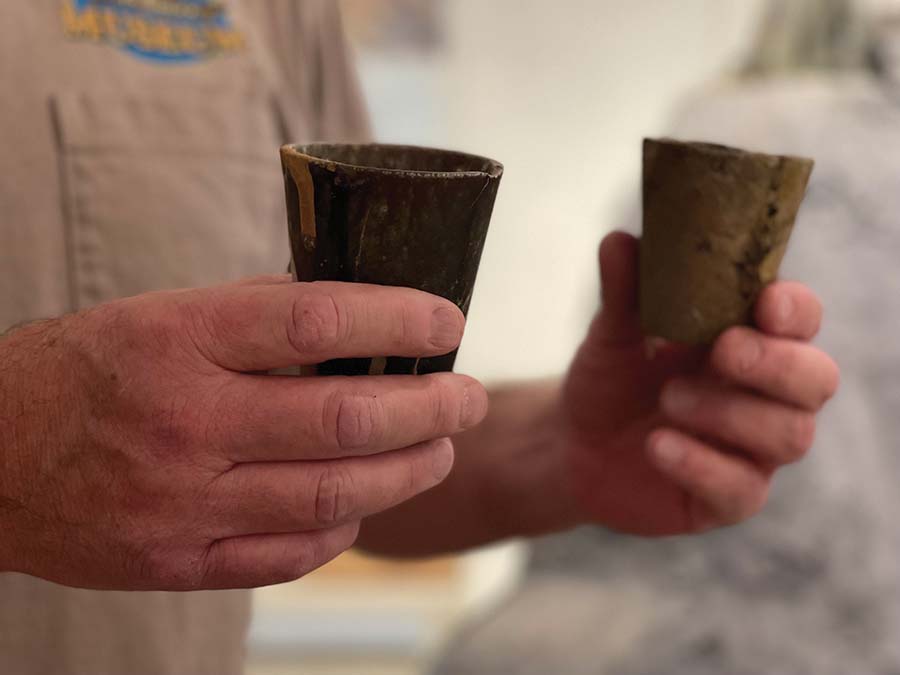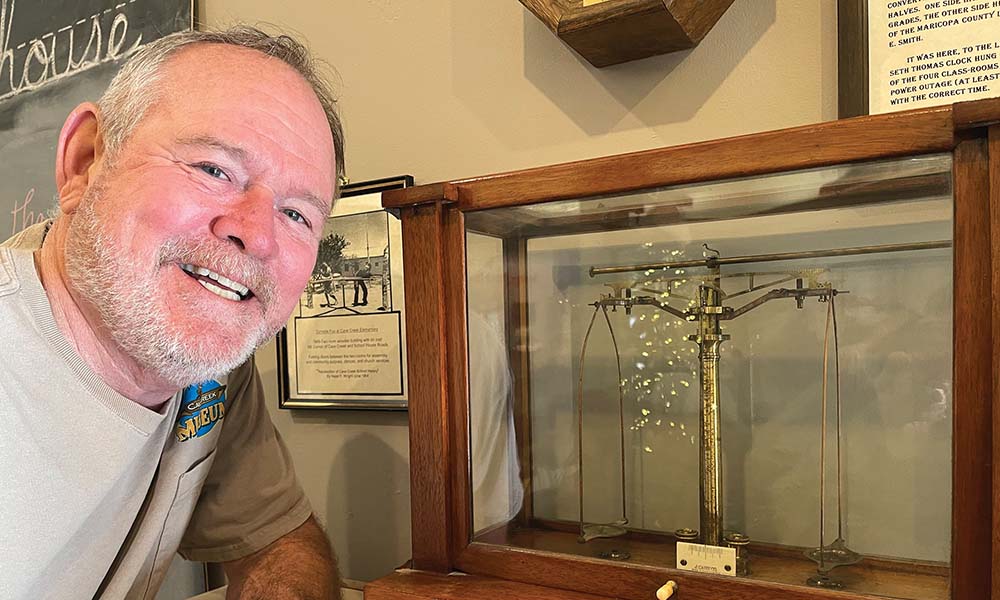Cave Creek – During old West times, plenty of honest people worked in the gold business. So did plenty of crooks. Unscrupulous individuals found ways to cheat on gold assays, leading to numerous scams. Fraudulent assayers wanted lower gold grades and unsavory miners wanted higher gold grades – and both had a few tricks up their sleeve.
Assayers were important to the gold mining era, as they were responsible for the testing of metal and ore to determine their ingredients and quality.
“Assayers could cheat by mixing gold dust with a common brass alloy of the period, which had elevated levels of copper and zinc,” says Dan Cornette, Cave Creek Museum mining expert. “The ingots produced from this contaminated gold had a much lower gold fineness than typical California placer gold, and lower quality meant lower prices.”

Another method involved poor quality control in the assaying process. Some firms had issues with quality control, leading to discrepancies between the assay values and the actual gold content. These discrepancies almost always were beneficial to the assayer.
Miners could cheat by salting the mine: loading shotguns with gold dust and firing them into the mine walls. Another trick was to mix gold dust with worthless rock samples. In at least one case, a miner put gold dust into his cigar then flicked his ashes into samples when assayers weren’t looking! When any of these scams were successful, a miner’s gold claim could look much more valuable than it really was.
Your fortune-seeking dreams could be quickly shattered if you discovered a scam too late. Smart folks learned quickly that they had better keep their eyes wide open if they wanted to have a chance of striking it rich in the gold business.
Visitors and members can experience the excitement of days long past during the Saturday, January 13, 2024 full demonstration of the Arizona Gold Mining Experience at the museum from 9-11:15 AM.
The excitement builds with the operation of the amazing Golden Reef Stamp Mill and Tramway, Arizona’s only fully operational ten-stamp ore crushing mill.
The 10, 1,000-lb. stamps slam down in synchronized motion to pound ore removed from the mine into fine gravel. The stamp mill was brought from its former location at the Golden Reef Mine on Continental Mountain to Cave Creek Museum, which has the only fully operational mining stamp mill in its original mining district in Arizona; it is located just five miles from its site on the mountain. The giant stamp mill also is connected to a working tramway and ore carts that carry the ore to be pulverized to the stamp mill.
The experience continues as guests peer into a mineshaft to show the blasting techniques used by hard rock miners. Next, onto the blacksmith shop for a demonstration of the many skills used when parts and tools had to be fabricated onsite.
Guests then are encouraged to try their luck at the gold panning station, where museum volunteers show visitors how to pan for ore and minerals just like the prospectors did.
Admission is $15 for adults and children under 12 are free. Reservations are required. For those who want the thrill of the full Gold Fever package, pay for the AZGME and add $145 for the three-hour gold mine tour. By doing so, you support the entire gold mining experience and Cave Creek Museum. Reserve tickets online at cavecreekmuseum.org as there is a limit. Cave Creek Museum is located at 6140 E. Skyline Drive in Cave Creek, Ariz., 480.488.2764. Open October through May.







